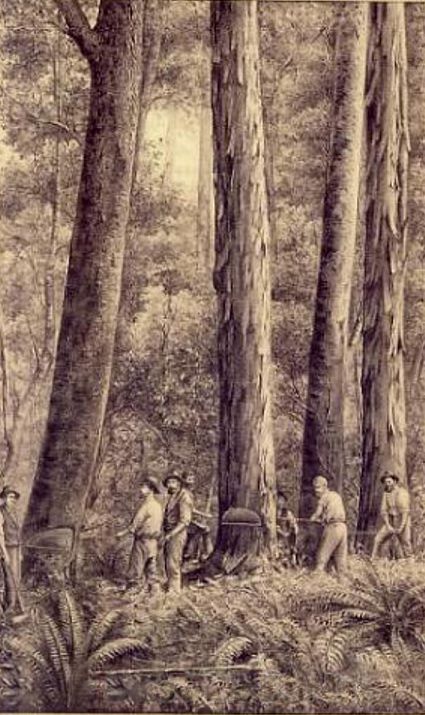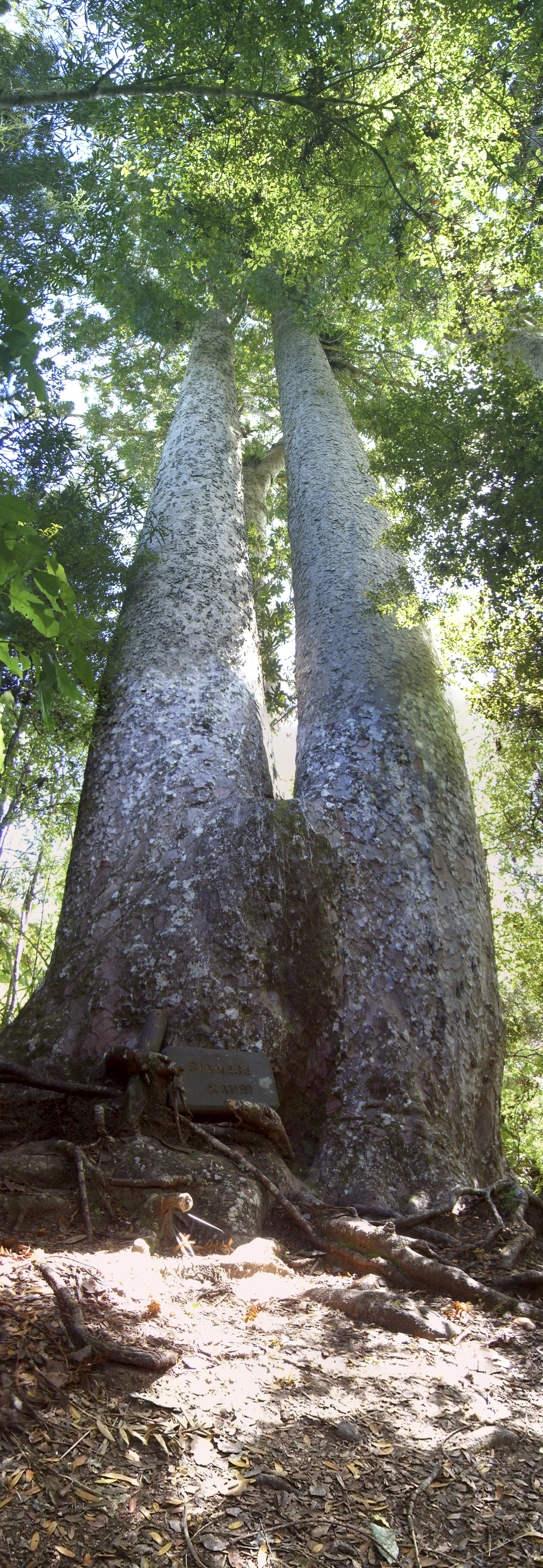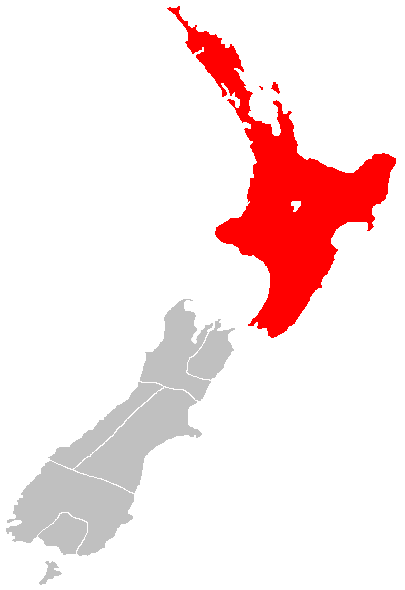|
Halocarpus Kirkii
''Halocarpus kirkii'', or monoao, is a species of conifer in the family Podocarpaceae. It is native and endemic to New Zealand. It was formerly known as '' Dacrydium kirkii''. Etymology This species is named in honour of the botanist Thomas Kirk. Description When seen at a distance, it resembles a small kauri in its overall appearance. It can be usually distinguished by its juvenile foliage, which often remains on the lower branches until the tree grows to approximately 10 metres tall. The tree ultimately reaches a height of about 25 metres, with a trunk up to 1 metre thick and grey-brown bark that has a rough, pustular texture. The pale reddish-brown wood is strong and durable. The leaves of the younger trees and on the lower branches of the adults are narrow and to some extent leathery, up to 4 cm long and 3 mm wide. The adult leaves are thick, scale-like and much smaller; the leaves overlap and lie appressed to the branchlets in 4 rows. It is not a common t ... [...More Info...] [...Related Items...] OR: [Wikipedia] [Google] [Baidu] |
Ferdinand Von Mueller
Baron Sir Ferdinand Jacob Heinrich von Mueller, (german: Müller; 30 June 1825 – 10 October 1896) was a German-Australian physician, geographer, and most notably, a botanist. He was appointed government botanist for the then colony of Victoria (Australia) by Governor Charles La Trobe in 1853, and later director of the Royal Botanic Gardens, Melbourne. He also founded the National Herbarium of Victoria. He named many Australian plants. Early life Mueller was born at Rostock, in the Grand Duchy of Mecklenburg-Schwerin. After the early death of his parents, Frederick and Louisa, his grandparents gave him a good education in Tönning, Schleswig. Apprenticed to a chemist at the age of 15, he passed his pharmaceutical examinations and studied botany under Professor Ernst Ferdinand Nolte (1791–1875) at Kiel University. In 1847, he received his degree of Doctor of Philosophy from Kiel for a thesis on the plants of the southern regions of Schleswig. Mueller's sister Ber ... [...More Info...] [...Related Items...] OR: [Wikipedia] [Google] [Baidu] |
Filippo Parlatore
Filippo Parlatore (Palermo, 8 August 1816 – Florence, 9 September 1877) was an Italian botanist. He studied medicine at Palermo, but practiced only for a short time, his chief activity being during the cholera epidemic of 1837. Although at that time he had been an assistant professor of anatomy, a subject on which he had already written (Treatise on the human retina), he soon gave up all other interests to devote his entire attention to botany. He first made a study of the flora of Sicily, publishing in 1838 ''Flora panormitana'' (Palermo); he also dealt with the Sicilian flora in later works. In 1840 he left home to begin his extended botanical expeditions. He travelled all through Italy, then into Switzerland (where he remained for a time at Geneva with De Candolle), to France (where he was at Paris with Webb, the Englishman) and to England, his longest stay being at Kew. His part in the Third Congress of Italian naturalists held at Florence in 1841 was of significance f ... [...More Info...] [...Related Items...] OR: [Wikipedia] [Google] [Baidu] |
Christopher John Quinn
Christopher is the English version of a Europe-wide name derived from the Greek name Χριστόφορος (''Christophoros'' or '' Christoforos''). The constituent parts are Χριστός (''Christós''), "Christ" or "Anointed", and φέρειν (''phérein''), "to bear"; hence the "Christ-bearer". As a given name, 'Christopher' has been in use since the 10th century. In English, Christopher may be abbreviated as "Chris", "Topher", and sometimes "Kit". It was frequently the most popular male first name in the United Kingdom, having been in the top twenty in England and Wales from the 1940s until 1995, although it has since dropped out of the top 100. The name is most common in England and not so common in Wales, Scotland, or Ireland. People with the given name Antiquity and Middle Ages * Saint Christopher (died 251), saint venerated by Catholics and Orthodox Christians * Christopher (Domestic of the Schools) (fl. 870s), Byzantine general * Christopher Lekapenos (died 931), ... [...More Info...] [...Related Items...] OR: [Wikipedia] [Google] [Baidu] |
Pinophyta
Conifers are a group of cone-bearing seed plants, a subset of gymnosperms. Scientifically, they make up the division Pinophyta (), also known as Coniferophyta () or Coniferae. The division contains a single extant class, Pinopsida. All extant conifers are perennial woody plants with secondary growth. The great majority are trees, though a few are shrubs. Examples include cedars, Douglas-firs, cypresses, firs, junipers, kauri, larches, pines, hemlocks, redwoods, spruces, and yews.Campbell, Reece, "Phylum Coniferophyta". Biology. 7th. 2005. Print. P. 595 As of 1998, the division Pinophyta was estimated to contain eight families, 68 genera, and 629 living species. Although the total number of species is relatively small, conifers are ecologically important. They are the dominant plants over large areas of land, most notably the taiga of the Northern Hemisphere, but also in similar cool climates in mountains further south. Boreal conifers have many wintertime adap ... [...More Info...] [...Related Items...] OR: [Wikipedia] [Google] [Baidu] |
Podocarpaceae
Podocarpaceae is a large family of mainly Southern Hemisphere conifers, known in English as podocarps, comprising about 156 species of evergreen trees and shrubs.James E. Eckenwalder. 2009. ''Conifers of the World''. Portland, Oregon: Timber Press. . It contains 19 genera if '' Phyllocladus'' is included and '' Manoao'' and '' Sundacarpus'' are recognized. The family is a classic member of the Antarctic flora, with its main centres of diversity in Australasia, particularly New Caledonia, Tasmania, and New Zealand, and to a slightly lesser extent Malesia and South America (primarily in the Andes Mountains). Several genera extend north of the equator into Indochina and the Philippines. ''Podocarpus'' reaches as far north as southern Japan and southern China in Asia, and Mexico in the Americas, and '' Nageia'' into southern China and southern India. Two genera also occur in sub-Saharan Africa, the widespread ''Podocarpus'' and the endemic ''Afrocarpus''. '' Parasitaxus usta'' is ... [...More Info...] [...Related Items...] OR: [Wikipedia] [Google] [Baidu] |
New Zealand
New Zealand ( mi, Aotearoa ) is an island country in the southwestern Pacific Ocean. It consists of two main landmasses—the North Island () and the South Island ()—and over 700 List of islands of New Zealand, smaller islands. It is the List of island countries, sixth-largest island country by area, covering . New Zealand is about east of Australia across the Tasman Sea and south of the islands of New Caledonia, Fiji, and Tonga. The country's varied topography and sharp mountain peaks, including the Southern Alps, owe much to tectonic uplift and volcanic eruptions. New Zealand's Capital of New Zealand, capital city is Wellington, and its most populous city is Auckland. The islands of New Zealand were the last large habitable land to be settled by humans. Between about 1280 and 1350, Polynesians began to settle in the islands and then developed a distinctive Māori culture. In 1642, the Dutch explorer Abel Tasman became the first European to sight and record New Zealand. ... [...More Info...] [...Related Items...] OR: [Wikipedia] [Google] [Baidu] |
Dacrydium
''Dacrydium'' is a genus of conifers belonging to the podocarp family Podocarpaceae. Sixteen species of evergreen dioecious trees and shrubs are presently recognized. The genus was first described by Solander in 1786, and formerly included many more species, which were divided into sections A, B, and C by Florin in 1931. The revisions of de Laubenfels and Quinn (see references), reclassified the former section A as the new genus ''Falcatifolium'', divided Section C into new genera '' Lepidothamnus, Lagarostrobos'' and ''Halocarpus'', and retained Section B as genus ''Dacrydium''. Species Distribution The natural range of ''Dacrydium'' extends from New Zealand, New Caledonia, Fiji and the Solomon Islands through Malesia (New Guinea, Indonesia, Malaysia and the Philippines), to Thailand Thailand ( ), historically known as Siam () and officially the Kingdom of Thailand, is a country in Southeast Asia, located at the centre of the Indochinese Peninsula, spanning , ... [...More Info...] [...Related Items...] OR: [Wikipedia] [Google] [Baidu] |
Thomas Kirk (botanist)
Thomas Kirk (18 January 1828 – 8 March 1898) was an English-born botanist, teacher, public servant, writer and churchman who moved to New Zealand with his wife and four children in late 1862. The New Zealand government commissioned him in 1884 to compile a report on the indigenous forests of the country and appointed him as chief conservator of forests the following year. He published 130 papers in botany and plants including ''The Durability of New Zealand Timbers'', ''The Forest Flora of New Zealand'' and ''Students' Flora of New Zealand''. Early life and career Thomas was the son of a Coventry nurseryman, George Kirk, and Sarah West, a florist. As a consequence of his parents' involvement in nursery work, he displayed a keen interest in botany, and later worked at a timber mill in Coventry. On Christmas Day 1850 he married a silk marker, Sarah Jane Mattocks. Poor health and financial problems led to his emigrating to Auckland, arriving with his family on 9 February 1863. Th ... [...More Info...] [...Related Items...] OR: [Wikipedia] [Google] [Baidu] |
Agathis Australis
''Agathis australis'', commonly known by its Māori name kauri (), is a coniferous tree in the family ''Araucariaceae'', found north of 38°S in the northern regions of New Zealand's North Island. It is the largest (by volume) but not tallest species of tree in New Zealand, standing up to 50 m tall in the emergent layer above the forest's main canopy. The tree has smooth bark and small narrow leaves. Other common names to distinguish ''A. australis'' from other members of ''Agathis'' are southern kauri and New Zealand kauri. With its novel soil interaction and regeneration pattern it can compete with faster growing angiosperms. Because it is such a conspicuous species, forest containing kauri is generally known as kauri forest, although kauri need not be the most abundant tree. In the warmer northern climate, kauri forests have a higher species richness than those found further south. Kauri even act as a foundation species that modify the soil under their canopy to c ... [...More Info...] [...Related Items...] OR: [Wikipedia] [Google] [Baidu] |
North Island
The North Island, also officially named Te Ika-a-Māui, is one of the two main islands of New Zealand, separated from the larger but much less populous South Island by the Cook Strait. The island's area is , making it the world's 14th-largest island. The world's 28th-most-populous island, Te Ika-a-Māui has a population of accounting for approximately % of the total residents of New Zealand. Twelve main urban areas (half of them officially cities) are in the North Island. From north to south, they are Whangārei, Auckland, Hamilton, Tauranga, Rotorua, Gisborne, New Plymouth, Napier, Hastings, Whanganui, Palmerston North, and New Zealand's capital city Wellington, which is located at the south-west tip of the island. Naming and usage Although the island has been known as the North Island for many years, in 2009 the New Zealand Geographic Board found that, along with the South Island, the North Island had no official name. After a public consultation, the board offi ... [...More Info...] [...Related Items...] OR: [Wikipedia] [Google] [Baidu] |
Great Barrier Island
Great Barrier Island ( mi, Aotea) lies in the outer Hauraki Gulf, New Zealand, north-east of central Auckland. With an area of it is the sixth-largest island of New Zealand and fourth-largest in the main chain. Its highest point, Mount Hobson, is above sea level.Great Barrier Island Aotea page on the DOC website (from the . Accessed 2008-06-04.) The is the |




